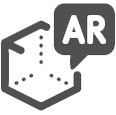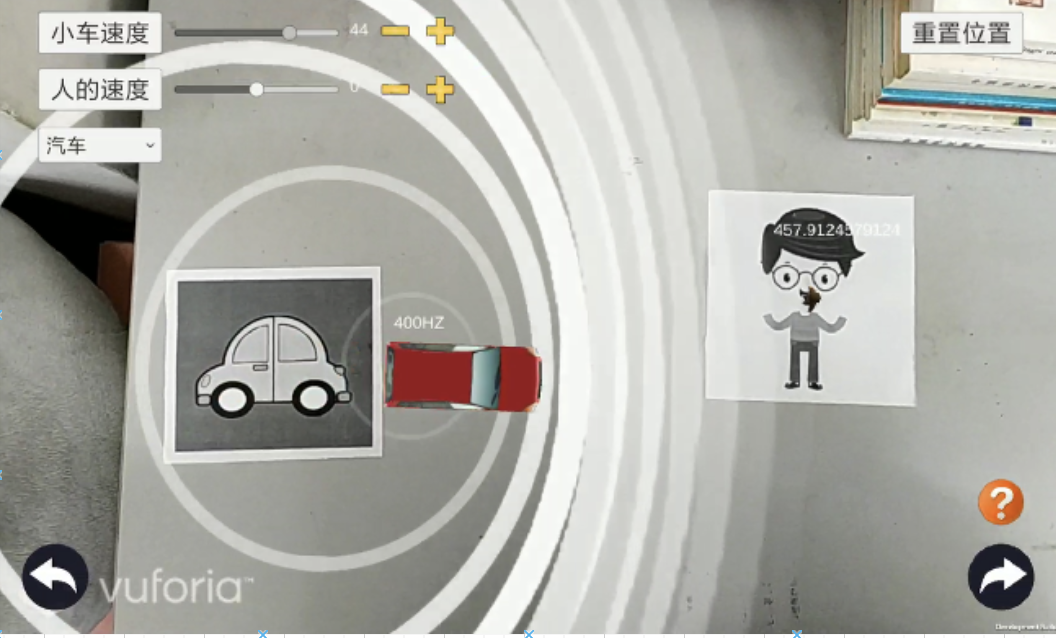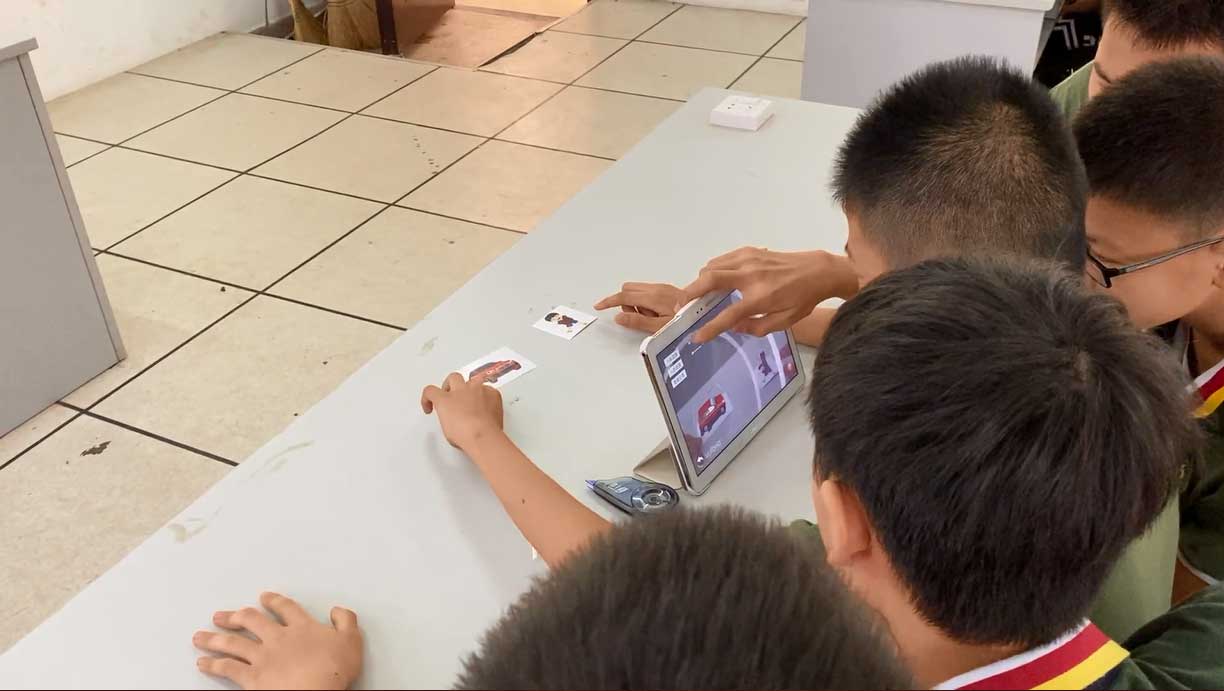4️⃣ Doppler effect simulation 
In this research, we developed an AR-based Doppler effect learning application titled as “DopplerAR”. With the DopplerAR, students can autonomously conduct the experiment by setting up the position, direction, and initial speed of the sound source (vehicles) and the observer (kid). Additionally, they can emulate the relative movement between the sound source and observer by moving the AR markers with their hands.
A experiment was conducted to investigate the educational benefits of DopplerAR by comparing with a traditional 2D simulation.The results revealed that students in the AR group outperformed those in the 2D group in terms of their learning achievement and interest. Both groups showed positive attitude toward the Doppler class and physics learning. Moreover, students presented a high level of cognitive perception toward the AR learning tool.
Publications:
- Integrating augmented reality into acoustics learning and examining its effectiveness: a case study of Doppler effect
Shufan Yu*, Qingtang Liu, Jingjing Ma, Yuanyuan Yang
Education and Information Technologies (2023)


